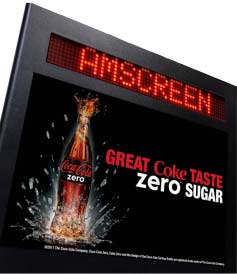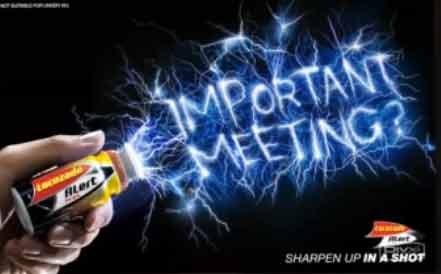What can effective content do for your business?
How about boosting sales? Yes, I know it's so often talked about that it's almost a cliche. But seriously, good content can really boost sales of advertised products. It can also more effectively deliver corporate communications and safety messages, inform guests and visitors about local or time-sensitive events and explain important topics about health and personal wellness. But our friends at Amscreen built out their network to sell stuff, and that's just what their content does. To wit, based on the market research that Amscreen has so generously posted online, the following vendors found real benefits from advertising at or near the point of purchase:
- Red Bull achieved a 20% sales lift of advertised products.
- Budweiser achieved a 29.1% sales lift across their brand during a DOOH campaign.
- Coca-Cola achieved a 36.6% sales lift of advertised products during a two-week campaign for Coke and Coke Zero products.
- Lucozade achieved an astonishing 49% sales uplift of advertised products (though admittedly, these products were sold immediately next to the screens at the checkout counter, so they probably represent the best possible scenario for using digital signage advertising).
Thankfully, Amscreen's customer successes are based on content that looks like it should -- simple, strategic and easy-to-read. This makes me glad for two reasons: first, more independent corroboration gives me further proof that I haven't been barking up the wrong tree with regard to content creation for the past few years. Second, it means that at least a few major brands now have incontrovertible proof that when done correctly, DOOH advertising can be extremely effective, and doesn't need to be expensive (on the content creation side, anyway -- I have no idea what Amscreen charges for placement).
For example, let's take a look at some of the spots that appeared on the Amscreen network:


As you can see from these examples, making effective DOOH content isn't exactly rocket science. In general, you want to get your message on screen as soon as possible, make it as short (succinct) as you can, and leave it there for as long as possible. Throw in some high-contrast imagery, maybe a few key features or benefits and a call to action and that's about all you need. Yes, it's nice when you showcase some true creative genius and make content that's both effective and beautiful. But if I were an advertiser, I'd be a lot more concerned about getting something that worked, rather than something that was just pretty.
The road to digital signage failure is paved with excessive eye candy and a lack of ad sales experience. While the content used by Amscreen's clients is certainly attractive (and they obviously have the ad sales thing down pat), it's clear that the visual elements are there for practical reasons, not just whimsy.
Do you have an example of great, effective DOOH content that you'd like to share? If so, leave a comment below -- and include a link to the content if you have one. (Email/RSS subscribers, click through to /blog to comment.)

 Subscribe to the Digital Signage Insider RSS feed
Subscribe to the Digital Signage Insider RSS feed